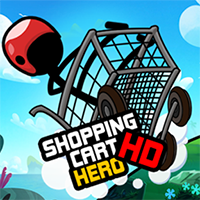
- #Shopping cart hero 5 hats how to#
- #Shopping cart hero 5 hats update#
- #Shopping cart hero 5 hats code#
Public const string CartSessionKey = "CartId" Private ProductContext _db = new ProductContext()
#Shopping cart hero 5 hats code#
Replace the default code with the following code: using The new class file is displayed in the editor. The Add New Item dialog box is displayed. Right-click the Models folder and select Add -> New Item.

#Shopping cart hero 5 hats update#
This class will provide the business logic to add, remove, and update items in the shopping cart. Later in this tutorial, you will add a class to handle data access to the CartItem table. Now, add a new class to define the schema for the shopping cart. Add CartItem as a Model ClassĮarlier in this tutorial series, you defined the schema for the category and product data by creating the Category and Product classes in the Models folder.
#Shopping cart hero 5 hats how to#
For more information see, How to Use ASP.NET Session State with Windows Azure Web Sites. This Cache Service provides a distributed caching service that is external to the web site and solves the problem of using in-process session state. For larger sites that provide multiple instances of an application or for sites that run multiple instances of an application on different servers, consider using Windows Azure Cache Service. The Wingtip Toys sample project shows how to use session state without an external provider, where session state is stored in-process on the web server hosting the site. While misuse of session state can have performance implications on larger sites, light use of session state works well for demonstration purposes. The ASP.NET Session state is a convenient place to store user-specific information which will expire after the user leaves the site.

You'll store this ID using the ASP.NET Session state. To manage shopping cart access, you will assign users a unique ID using a globally unique identifier (GUID) when the user accesses the shopping cart for the first time. Users will be able to browse and add items to the shopping cart even if they are not registered or logged in. In this tutorial, you'll create a shopping cart to manage the products that users are interested in buying.


 0 kommentar(er)
0 kommentar(er)
